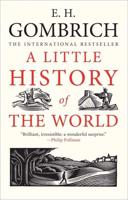Publisher's Synopsis
The Historians' History of the World is in one sense of the word a compilation, but it is a compilation of unique character. The main bulk of the work is made up of direct quotations from authorities, cited with scrupulous exactness; but so novel is our method of handling this material that the casual reader might scan chapter after chapter without suspecting that the whole is not the work of a single writer. Yet every quotation, whatever its length, is explicitly credited to its source, and the reader who wishes to know the names of the authors and works quoted may constantly satisfy his curiosity without the slightest difficulty. The key to identification of authorities is found in the unobtrusive reference letters (called by the printer "superior letters"), such as b, c, d, which are scattered through the text. These reference letters refer in each case to a "Brief Reference-List" at the end of the book, where, chapter by chapter, author and work are named. Should any work be quoted more than once in a chapter, the same reference letter is used to identify that work in each case.The reference letters are used in two ways: they are either (1) placed at the end of a sentence, in which case they designate an actual quotation, or (2) they are placed against the name of an author, in which case they designate an authority cited but not necessarily quoted. Each reference letter at the end of a sentence refers to all the matter that precedes it back to the last similarly placed reference letter. The quotation thus designated may be of any length, -a few sentences or many pages. This quotation may contain reference letters of the second type just explained, but, if so, these may be altogether disregarded in determining the limits of the quotation; the context will make it clear that there is no change of authorship. On the other hand, however continuous the narrative may seem, a reference letter at the end of a sentence must always be understood to divide one quotation from another.All this may seem a trifle complex as told here, but it will be found admirably simple and effective in practice. The reader has but to make the experiment, to find that he can trace the authorship of every line of the work without the slightest difficulty. It may be well to add, however, that the reference letter a is reserved for editorial matter, and that, very exceptionally, this letter is used in combination with another letter, as ab, ac, ad, to give credit for matter that has been editorially adapted, but not quoted verbatim. It is perhaps hardly necessary to explain that direct quotations, such as go to make up the bulk of our work, are often given in an abbreviated form through the omission of matter that is redundant or, for any reason, inadmissible. The necessity for such change is obvious, since otherwise the varied materials could not possibly be made to harmonise or to meet the needs of our space. But, beyond this, no liberty whatever is taken with matter presented as a direct quotation. Where editorial modification is thought necessary, the use of reference letters makes such modification feasible without introducing the slightest ambiguity. We repeat that every line of the work is ascribed to its proper source with the utmost fidelity. Any matter not otherwise accredited-as, for example, various introductions, chronologies, bibliographies, and the like-will be understood to be editorial. Brackets also indicate editorial matter.








